Lead glass-filled rubies, also known as composite rubies, are nearly worthless (as described in my previous post). The problem is that there are thousands and thousands of sellers who will try to sell you a composite ruby as the real thing. Some of them will openly lie to you. Others will simply conceal the truth.
This problem has been ongoing since 2004 when lead glass-filled rubies appeared on the market. This has been a chronic problem both online and in-store. Just in case you have bought a piece of jewelry with ruby or rubies after 2004, it might be a good idea to reconsider what exactly it is that you have bought. Are you sure it is a piece of ruby jewelry? Or it might be the case you are one of those who have been duped into buying cheap composite ruby jewelry for big bucks? You can use these four easy tips to re-evaluate your purchase. In case you are not sure, you are always welcome to ask the Community.
If you are just planning to buy ruby jewelry or a loose ruby gemstone, use these four tips and avoid being duped by dishonest sellers. So, here are a few things you should always pay due attention to.
Pay Attention to the Visual Characteristics
The most notorious visual characteristic of a composite ruby is the internal gas bubbles (Figures 1 & 2). These can be single spheres or clouds of bubbles, flattened or rounded, and they are present in virtually all lead glass-filled rubies. On most occasions, they are visible even to an unaided eye. Therefore, this is the easiest feature to identify such stones.
According to GIA, “In many cases the bubbles were so large and/or so prolific that the observer’s first thoughts strayed towards a conclusion that the stone was a low quality glass rather than something associated with ruby.” Note that there are never gas bubbles in natural rubies.
Another feature, not so widely discussed, is the presence of lighter color lines (Figure 3). These lines are also very common in composite rubies. However, they may be visible only under a certain angle and/or light conditions.
Pay Attention to the Setting
Just like with emeralds, it is extremely unlikely that you will find a natural ruby in a silver setting. The same reasoning applies: silver is a cheap metal (around $0.50 per gram), and as such, it would substantially undermine the true value of any valuable gemstone, including ruby.
Of course, there may be exceptions. For example, when rubies are very small and used merely as the accent stones. However, if a fairly large ruby has been set in a silver setting, it is a clear indication you have come across a composite ruby (Figures 4 & 5). Be equally cautious with the jewelry where sizable rubies are set in low-grade gold, such as 9K or 10K gold.
Pay Attention to the Description
A. Purple Prose Descriptions
Beware of ornate descriptions that provide a lot of useless information on how beautiful, well-matched, rare, or desirable the gemstones are, lacking the most important data at the same time. Such purple prose has two aims: to inflate the price of the item, persuading you that it is something truly outstanding, and to distract your attention away from what is really important.
Take a look at the samples below (Figure 6 to Figure 8), the exaggerated pathos seller uses: “Madagascan Ruby is very sought after and following hot on the heels of Burmese Ruby” (Figure 6); “Stunning genuine Thai Ruby with white Topaz necklace. The value is in the color saturation, this is pigeon blood red” (Figure 7); “This ruby set is a must for the forthcoming festive season. The rubies are marquise cut and all match each other perfectly.” (Figure 8). The seller keeps on bragging about various ruby sources, the difference between pink sapphire and pinkish-red ruby, the fluorescence of ruby, etc. All kinds of things that actually have nothing to do with that particular ruby or piece of jewelry.
Yet, the seller does not say a single word about what is really important. Is that even a real ruby? Is it treated? If yes, what is the treatment method? What is the clarity of the stone? Nothing! Pay attention, in the first description (Figure 6) there is much more information about miserably small, worthless, single cut six diamonds (total weight only 0.04 carats) than about what is claimed to be a Madagascar ruby of 1.75 carats. No doubt, these all are lead glass-filled rubies. Never trust descriptions like these!
Truly professional descriptions are short, precise, and do contain all the relevant information.
B. The Magic Word “Treated”
Beware of the descriptions stating that the ruby is “treated” but not disclosing what the treatment method is (Figures 9 & 10). As discussed in the previous post, there is a huge difference between heated rubies and lead glass-filled composite rubies, both in terms of price and durability. Whenever you see a description like this (below), be sure it is a composite ruby.
C. Seller “Doesn’t Know”. Really?
Beware of the descriptions stating that the treatment method “has not been researched”, ruby “has not been tested”, or the treatment is “unknown”. Such descriptions clearly indicate that the seller is unwilling to lie openly, but he is even less willing to tell you the truth – this is a composite ruby (Figures 11 & 12). If a ruby is natural, it is always worth the effort and money to test it.
D. The Worst of Them – Shameless Liars
As already mentioned, sometimes sellers conceal the truth, but sometimes they openly lie. The fact that a description states “heated” does not mean it shouldn’t read as “heated, lead glass-filled”. Unfortunately, things like that happen all the time. There are and always will be sellers with no professional ethics.
In the example below (Figure 13) the seller has been shameless enough even to state that this is a “100% genuine ruby”, whereas, in reality, it is a 100% composite ruby (pay attention to the clearly visible gas bubbles and the lighter color lines). Bear that in mind and always compare information in the description with the visual characteristics of the gemstone in question. Evaluate whether the rest of the description looks professional and pay attention to such details as the setting material.
As far as this item (below) is concerned, I have one last rhetorical question: what the heck the expert was looking at if she managed to miss all these discrepancies?
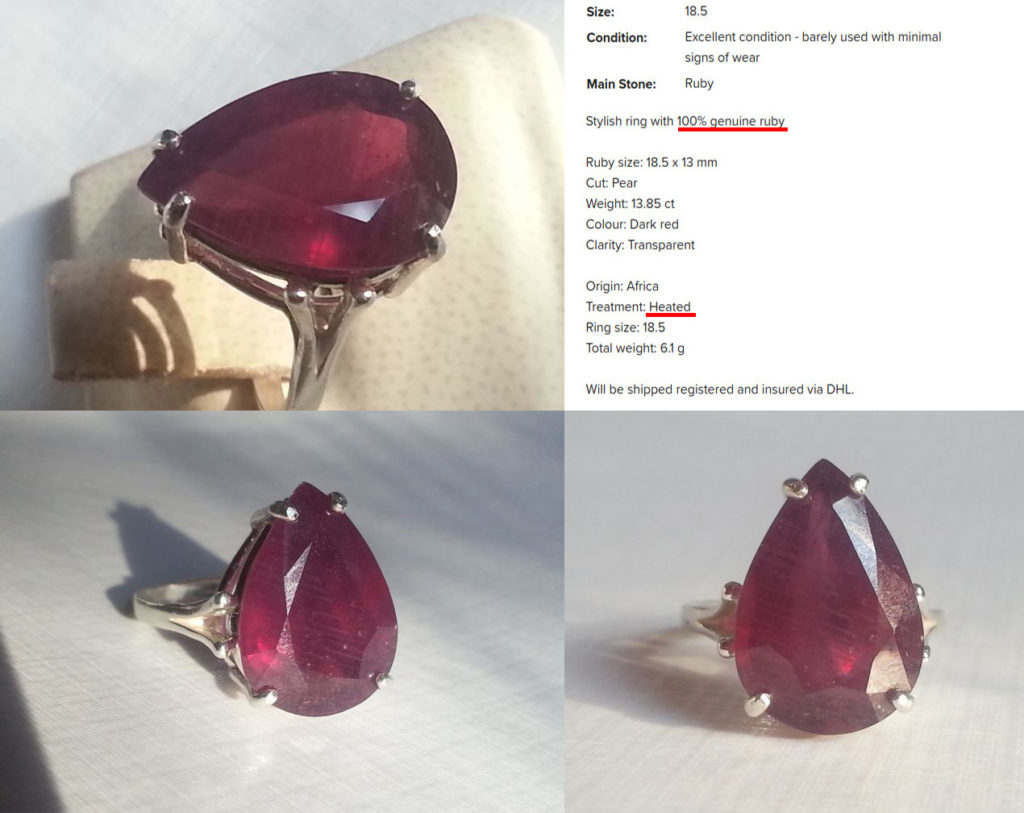
Figure 13: Ring with a lead glass-filled ruby of 13.85 ct. The seller openly lies about the treatment method
Pay Attention to the Certificates
Normally certificates add legitimacy. However, one should not be blinded by the mere presence of a certificate. Not all certificates are equal.
First of all, pay attention to who has issued the certificate. If it is some kind of a funny lab like GGL (read more about GGL certificates in my post about fake emerald jewelry), such a certificate will not add legitimacy, but quite the contrary. Secondly, even if the certification authority in question is not entirely unknown or unreliable, still pay attention to what exactly has been stated in the certificate.
Note that in the example below (Figure 14) the only thing that has been said about that ruby in the certificate is this: “1 additional approx. 3.60 ct red ruby mounted in jewelry”. Additional?! To what? To the miniature diamonds of 0.01 carat each and 0.30 ct in total? Seriously?
First of all, this certificate is quite useless as it provides no information about the most important, supposedly the most expensive, part of this jewelry article. That’s somewhat strange, isn’t it?
Secondly, what’s the point of spending money on such a useless certificate if it is not for convincing the potential buyer that this piece of jewelry possesses the legitimacy it actually is not entitled to? Note how much weight this certificate has been given in the item description! What for? If that is for the gold, that’s meaningless as the gold setting has already been stamped accordingly, indicating that its purity is 18K.
So, it turns out that all the fuss is about those miserably small diamonds that cost next to nothing? Or is it rather about cunning marketing and legitimization of a composite ruby? This is a very good example of how important it is to be attentive to the details.
If you happened to buy a piece of jewelry with rubies or a loose ruby gemstone after 2004, please share your experience in the comments section below.
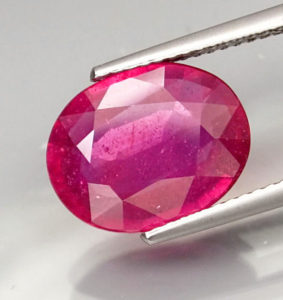
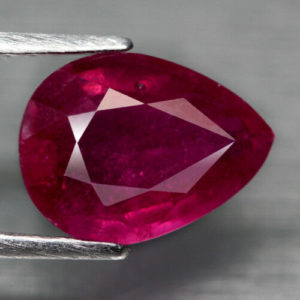
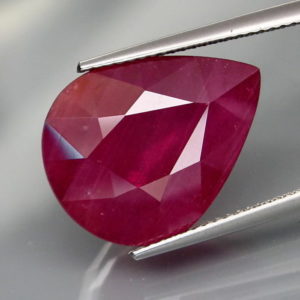
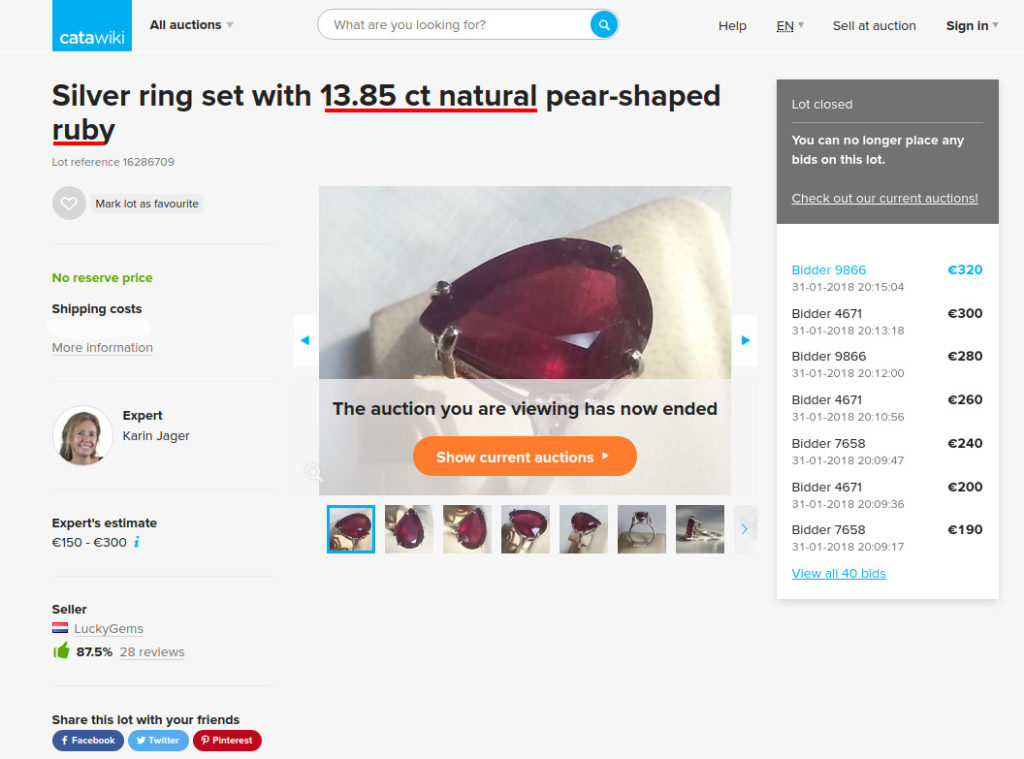
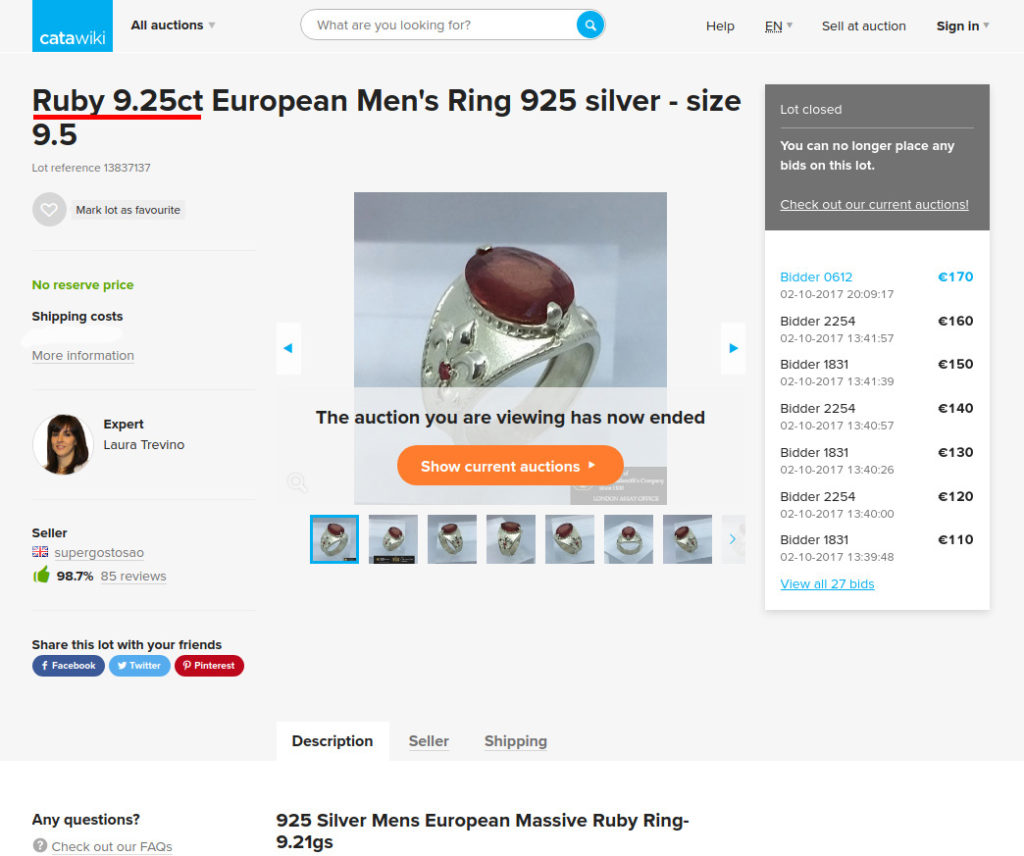
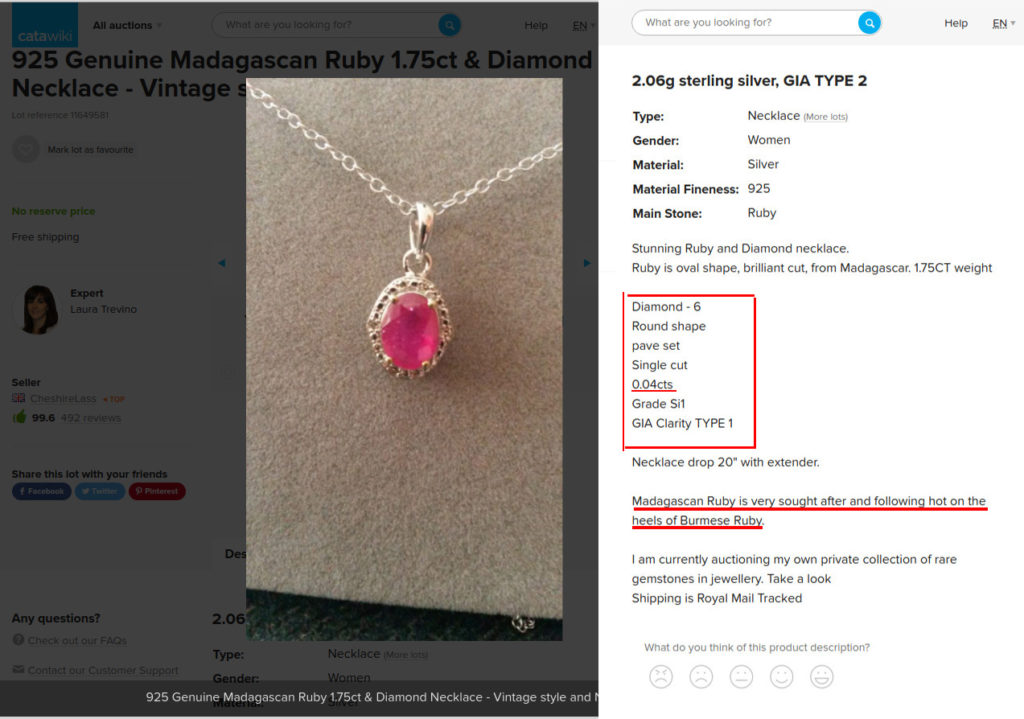
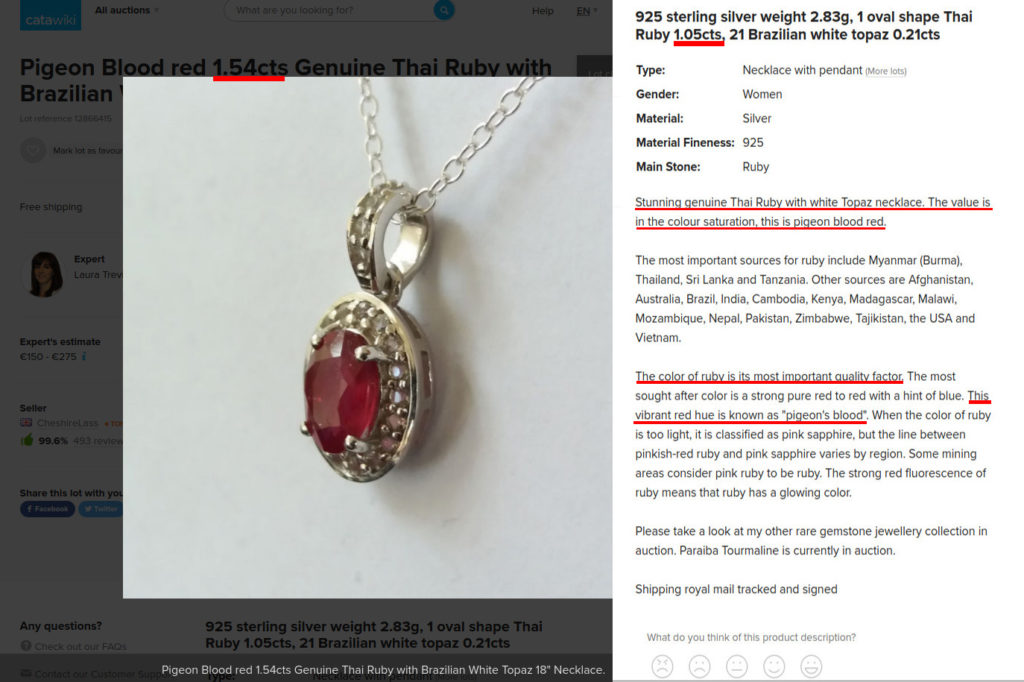
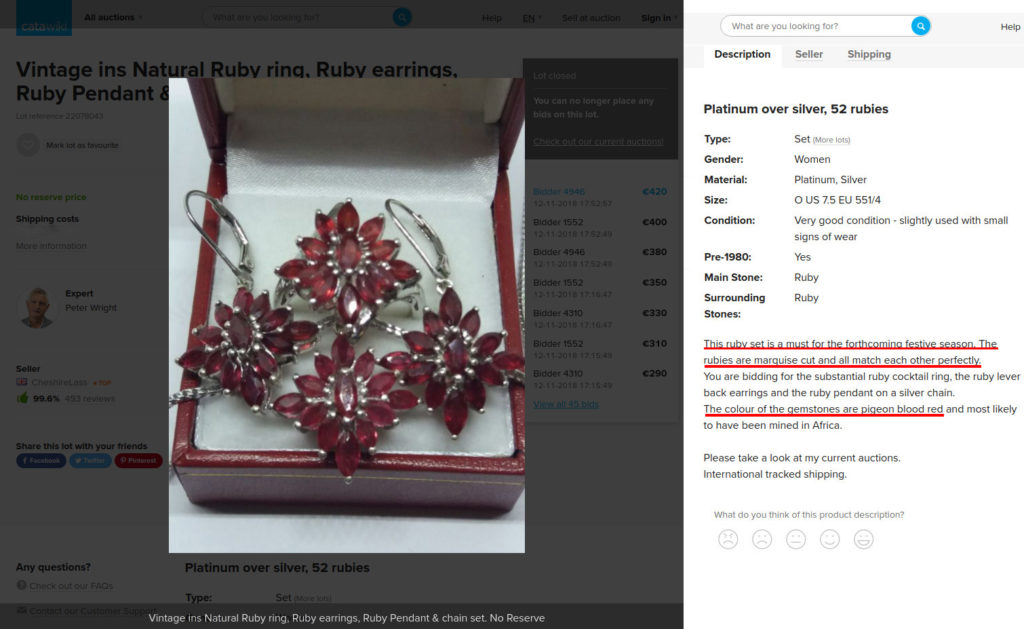
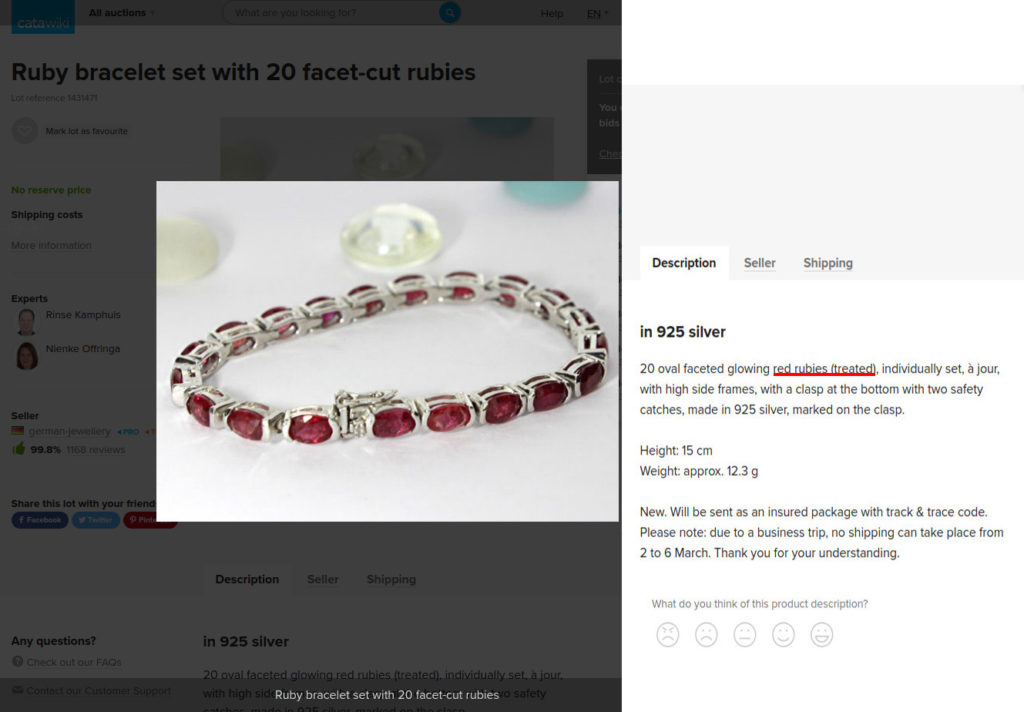
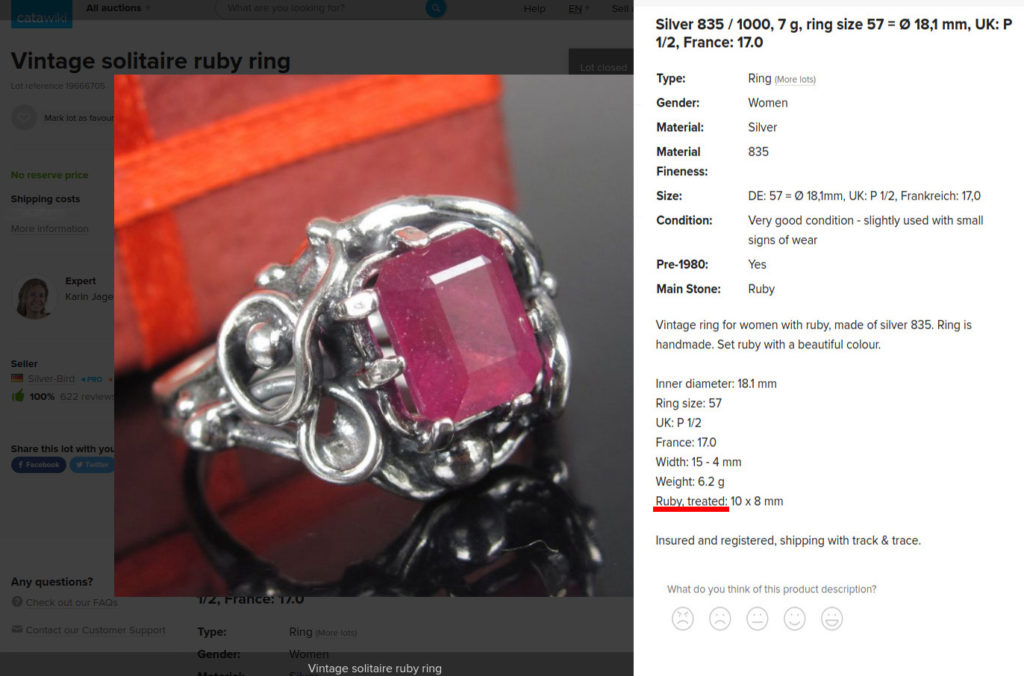
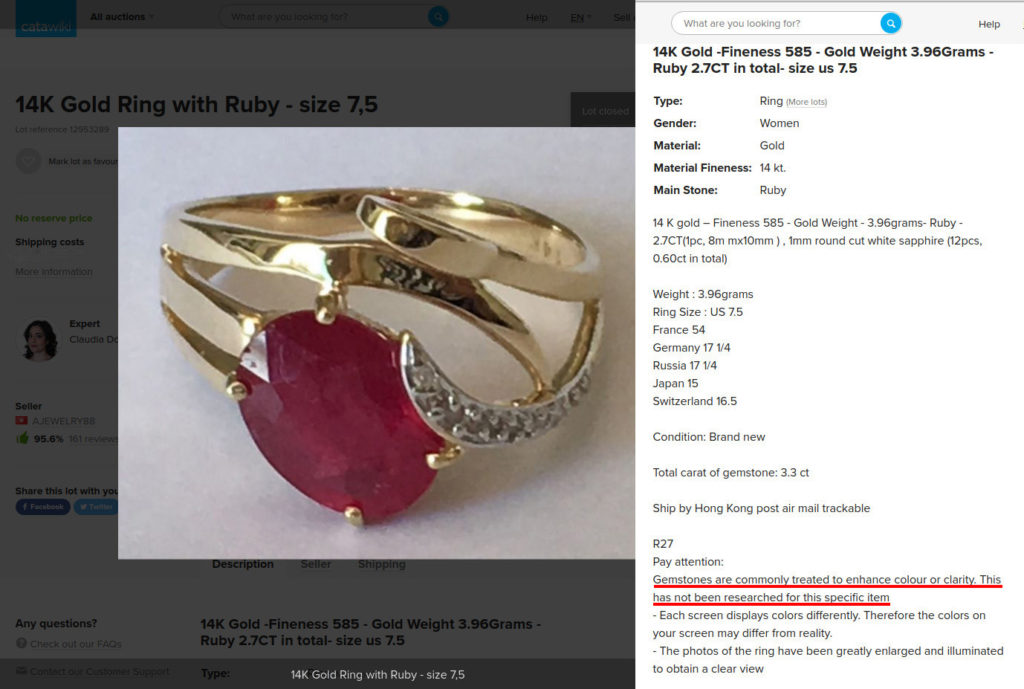
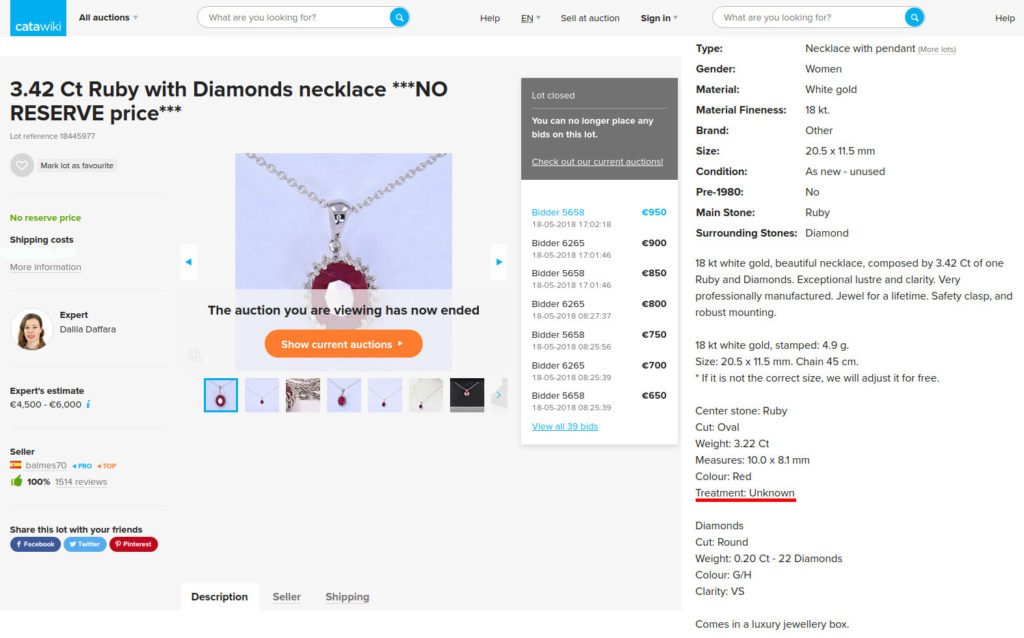
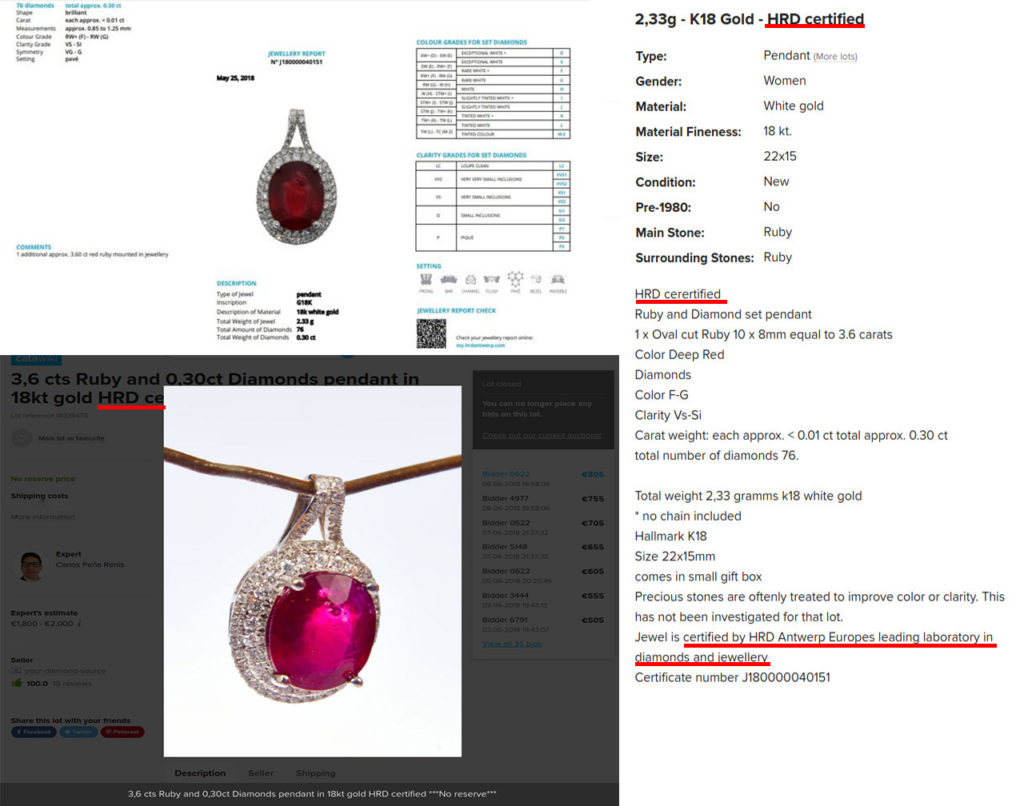
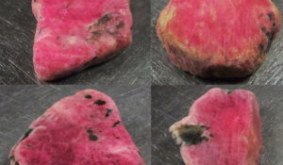
1 Comment